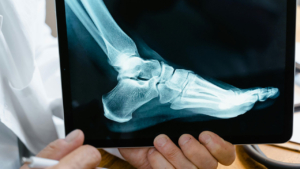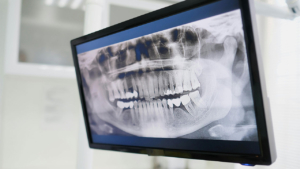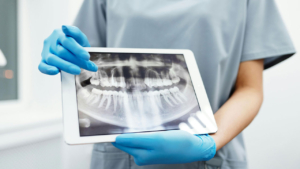Key Takeaways
- DR panels greatly improve workflow, speed, and safety: Upgrading to digital radiography means quicker imaging, better image quality, and lower patient radiation exposure compared to film.
- Different DR panel technologies exist: Common options include amorphous silicon and CMOS detectors and different X-ray conversion materials.
- Budget for the full cost: Consider the panel’s price, installation fees, and future upgrades. Look into incentives or rebates that can help offset the investment.
- Choose a trusted supplier: Work with an experienced, reputable vendor that offers strong support, ensures compatibility with your systems, and understands local regulations.
- Plan a smooth transition: Train your staff on the new system and adjust workflows. Digital X-ray is reliable and leads to faster diagnoses and better patient care.
Before you buy DR panels Los Angeles for your clinic or medical facility, it’s important to understand your options and the benefits. Digital radiography panels (DR panels) have transformed how clinics take X-rays, making imaging faster, easier, and safer for patients.
This DR panel buying guide will walk you through the key things to consider – from why upgrading is beneficial to how to choose the right supplier – especially for healthcare providers in Los Angeles (LA) and across California. Whether you run a small practice or a large hospital, knowing what to look for will help you find the best DR panels for medical imaging without hassle.
Why Buy Digital Radiography Panels?
Upgrading from film or computed radiography (CR) to direct digital panels offers significant advantages. Here’s why clinics choose to install DR panels:
- Enhanced Workflow Efficiency: Digital panels eliminate film and cassette handling, with images appearing instantly on computers. This reduces manual tasks, allowing staff to serve patients faster and prioritize care rather than equipment handling.
- Reduced Processing Time: DR technology delivers X-ray images in seconds, eliminating delays associated with film development or CR plate scanning. Faster imaging means quicker diagnoses, shorter patient visits, and greater daily patient throughput in busy clinics or hospitals.
- Improved Image Quality: Modern DR panels produce detailed images with extensive tonal range. Doctors can easily zoom, adjust brightness, and apply filters for clarity, aiding accurate diagnoses. Digital images maintain quality indefinitely, advantageous for patient records and consultations.
- Increased Patient Safety: Digital radiography typically requires lower radiation doses due to sensitive detectors. Immediate image verification reduces retakes and unnecessary radiation exposure. Eliminating film-processing chemicals also enhances staff safety and environmental friendliness—highly valued in California.
Types Of DR Panel Technologies
Understanding panel technologies helps when purchasing flat panel detectors for X-ray LA facilities:
Amorphous Silicon Detectors
Amorphous silicon (a-Si) detectors use a thin silicon film layered with tiny electronic components. When X-rays strike a scintillator, the a-Si captures the emitted light as a digital image. Widely used and reliable, a-Si detectors deliver consistent, high-quality images, making them standard in many digital X-ray systems for clinics.
CMOS Detectors
CMOS (Complementary Metal-Oxide Semiconductor) detectors, similar to digital camera sensors, offer fast, efficient imaging with low noise for clearer pictures. Ideal for quick image capture and portable devices, CMOS technology is gaining popularity for its speed and energy efficiency.
Gadolinium Oxysulfide Detectors
Gadolinium oxysulfide (Gadox) detectors use phosphor layers that emit visible light upon X-ray exposure, converted into digital images by the panel’s sensor. Gadox is older and more affordable but requires higher radiation doses and may produce slightly less clear images compared to cesium iodide detectors. Still, Gadox panels provide good, cost-effective performance. Consider panel materials carefully when balancing quality and cost.
Cost Considerations
Buying DR panels involves a significant investment. When budgeting for medical imaging hardware LA clinics need, consider:
Equipment Expenses
Primary costs include the panel type and features. Wireless panels, larger sizes (17” x 17”), or advanced technologies (CMOS-based or cesium iodide) are typically pricier. Retrofit kits for upgrading existing systems are cost-effective. Evaluate what’s included—software, warranty, or computer—to choose the best DR panels for medical imaging.
Installation Costs
Professional installation integrates DR panels with existing equipment, imaging software, and PACS. Costs may cover hardware modifications, software configuration, and hardware updates. Factor in potential downtime and request clear quotes from suppliers.
Potential Upgrades
Plan for future growth. Systems should allow adding panels or upgrading from older CR technology, reducing long-term expenses like film and chemical maintenance. Consider warranty or maintenance plans to protect your radiology equipment Los Angeles investment.
Incentives And Rebates In California
Federal incentives (Medicare reimbursements, tax deductions under Section 179) encourage digital imaging adoption. California-specific rebates or grants for digital upgrades reduce initial costs and compliance costs related to chemical waste. Always explore available incentives when planning to upgrade to digital X-ray LA.
Choosing The Right Supplier
Select reliable Medical Imaging Products and Agents Suppliers by evaluating:
Evaluating Company Reputation
Choose established suppliers with proven experience serving Los Angeles clinics. Verify reviews, local presence, and authorized dealership status to ensure quality radiology equipment.
Assessing Product Support
Ensure suppliers offer comprehensive installation support, training, technical assistance, and robust warranty or maintenance plans. Prompt support minimizes downtime and maintains efficiency in digital X-ray systems for clinics.
Ensuring Integration Capabilities
Your DR panel should integrate smoothly with existing equipment, software, and PACS. The supplier should confirm compatibility or provide necessary interfaces. Effective integration ensures seamless workflow for flat panel detectors for X-ray LA facilities.
Compliance With State Regulations
Verify that your supplier understands California-specific regulations for X-ray equipment, providing compliant and certified products. They should assist with required registration and documentation with California’s Radiologic Health Branch, ensuring compliance with radiation safety and quality standards.
Tip: A full-service Medical Imaging Equipment and Agents Distributor can efficiently supply and support all your imaging needs.
Transitioning From Conventional To Digital X-Ray
Switching from traditional (film or CR) X-ray setups to digital radiography panels LA requires thoughtful planning. Consider these key aspects for a smooth transition:
Workflow Adjustments
Moving to DR panels eliminates darkrooms, film development, and cassette handling. Images are instantly viewable on computers, requiring procedural updates. Staff previously focused on film can assist with patient preparation or digital image management. Adjust scheduling as exams are quicker. Document new protocols clearly for image acquisition, review, and distribution, ensuring an efficient, streamlined workflow.
Training For Staff
Effective training ensures the successful adoption of your new digital X-ray systems for clinics. Staff should learn acquisition software, proper handling of portable detectors (battery management if wireless), and image quality checks. Training, often provided by Medical Imaging Products and Agents Suppliers, should also cover digital storage and PACS management. Physicians and radiologists may need orientation on new viewing software, maximizing technology utilization and staff confidence.
Long-Term Reliability Of DR Systems
DR panels typically offer high reliability due to fewer mechanical components. Proper handling (avoiding drops or moisture) and periodic software maintenance ensure longevity. Protective covers or “drop shields” provide additional durability. Maintaining service contracts ensures prompt issue resolution. A well-maintained DR system delivers consistent, reliable performance and image quality, although eventual upgrades may be considered.
Impact On Healthcare Outcomes
Transitioning to digital radiography enhances patient care significantly. Rapid image availability leads to quicker diagnoses, which is crucial in emergencies. Enhanced image clarity reduces diagnostic errors, and lower radiation doses improve patient safety. Efficiency gains decrease patient wait times, increasing satisfaction. Digital image sharing allows immediate specialist consultations. Overall, adopting DR panels Los Angeles improves diagnostic accuracy, patient safety, and satisfaction, significantly benefiting clinical outcomes.
Make The Smart Move To Digital Radiography In Los Angeles With Spectrum Medical Imaging Co.
Upgrading to digital radiography panels is a critical investment in your clinic’s future, offering improved efficiency, superior image quality, and enhanced patient safety. By carefully considering the panel technology, understanding associated costs, and choosing a reputable Medical Imaging Equipment and Agents Distributor, you can ensure a seamless transition and long-term satisfaction with your equipment. At Spectrum Medical Imaging Co., we have decades of experience helping healthcare providers select, install, and maintain the best DR panels Los Angeles has to offer.
Ready to modernize your medical imaging capabilities? Contact Spectrum Medical Imaging Co. today and let our experts guide you through every step of your upgrade.




